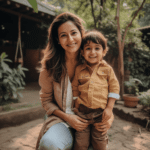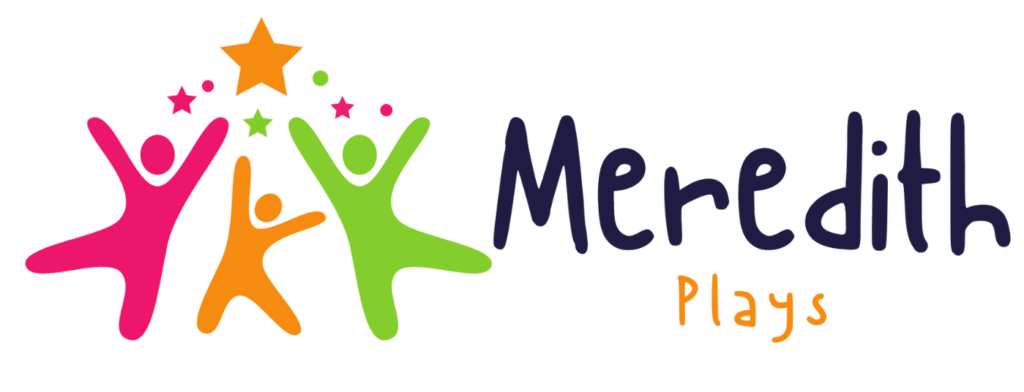Home should always be a place of safety and comfort, especially for aging parents who may face unique challenges as they age. From slippery floors to insufficient lighting, even the smallest details can pose significant risks for seniors. Ensuring a secure environment is essential for families to support their loved ones’ independence and well-being.
Every thoughtful adjustment, whether it’s installing grab bars or simply reorganizing cluttered spaces, can make a meaningful impact. These changes not only prevent accidents but also show care and commitment to protecting those who once cared for us.
Quick Reference: 10 Safety Tips
| Safety Tip | Key Actions |
|---|---|
| Declutter and Organize | Clear pathways, remove tripping hazards, secure loose rugs, and tidy cords. |
| Improve Lighting | Add brighter bulbs, motion-sensor lights, and nightlights; use glow-in-the-dark light switches. |
| Install Grab Bars and Handrails | Place grab bars in bathrooms, handrails on stairs, and ensure they are secure and easy to grip. |
| Prevent Slips and Falls | Use non-slip mats, apply anti-slip treatments, and wear footwear with grips. |
| Embrace Technology | Install smart devices like motion-sensor lights, fall detectors, and voice-activated assistants. |
| Create a Fire and Emergency Plan | Install smoke detectors and fire extinguishers, practice escape routes, and keep contacts handy. |
| Maintain Open Communication | Encourage regular conversations, check for safety concerns, and use technology to stay connected. |
| Set Up a Medication Management System | Use pill organizers, digital reminders, and apps to track schedules and dosages. |
| Upgrade Furniture for Accessibility | Choose ergonomic chairs, adjustable beds, and accessible storage at comfortable heights. |
| Foster Emotional Well-Being | Combat loneliness with visits, community engagement, and social activities. |
Declutter and Organize
A well-organized home isn’t just visually appealing—it’s a fundamental aspect of senior home safety. Cluttered hallways, loose cords, and overfilled cabinets can pose significant tripping hazards, making it essential to create clear pathways and organized spaces that support a safer environment for aging loved ones.
Start by focusing on high-traffic areas like living rooms, hallways, and entryways. Remove unnecessary furniture or items that obstruct movement, and ensure pathways are wide enough to navigate easily. Secure loose rugs with non-slip pads and bundle cords neatly against walls to prevent accidents. In frequently used spaces, keep everyday essentials—such as glasses, remotes, and phones—within easy reach to minimize the need for stretching or bending.
The importance of a safe, clutter-free home goes beyond preventing physical injuries. Research shows that approximately 1 in 6 older adults experienced abuse in community settings last year, highlighting the need for vigilance in every aspect of senior care, including at home. By tackling small changes, like decluttering or reorganizing storage areas, you can take a significant step toward creating a home environment that prioritizes safety, comfort, and peace of mind for your aging loved ones.
Improve Lighting for Better Visibility

Good lighting is essential for creating a safe environment for aging parents. As eyesight changes with age, dimly lit rooms or poorly positioned lights can make it difficult to navigate spaces safely, increasing the risk of trips and falls. Enhancing visibility in key areas of the home can make a significant difference.
Start by evaluating commonly used spaces such as hallways, staircases, bathrooms, and kitchens. Bright bulbs are a simple yet effective way to reduce shadows, but be mindful of glare, which can be disorienting. Motion-sensor lights are especially useful, as they illuminate automatically and eliminate the need for fumbling in the dark. For nighttime safety, add soft nightlights along paths to the bathroom or kitchen.
Accessibility is key. Position light switches at an easy-to-reach height and consider installing glow-in-the-dark covers to locate them quickly during emergencies. With these small but impactful updates, you create a home that is not only brighter but also safer for your aging loved ones.
Install Grab Bars and Handrails
Bathrooms and staircases are among the most hazardous areas in any home, especially for seniors. Installing grab bars and handrails is one of the simplest and most effective senior home safety measures, as it provides stability, reduces the risk of falls, and promotes confidence in daily movements.
In the bathroom, strategically place grab bars near the toilet and inside the shower or bathtub. Opt for bars with a non-slip surface and ensure they are securely anchored to the wall to support weight effectively. For additional safety, consider adding a shower chair or a non-slip bath mat to minimize the risk of slipping on wet surfaces.
Install sturdy handrails on both sides of staircases to provide balance and support. Continuous handrails that extend beyond the top and bottom steps are particularly helpful for seniors with mobility challenges. Handrails can also ensure ease of movement for small steps or transitions between rooms.
Regularly inspect all grab bars and handrails to confirm they remain secure and in good condition. These simple installations are essential for creating a home that supports aging in place while ensuring safety and peace of mind for your loved ones.
Prevent Slips and Falls with Non-Slip Solutions
Slips and falls are among the most common accidents for seniors, often leading to serious injuries. Preventing these incidents starts with addressing slippery surfaces throughout the home, particularly in high-risk areas like bathrooms, kitchens, and entryways.
With the the help of experts, like fire protection services Los Angeles, start by equipping the home with essential safety devices:
- Non-Slip Mats: Place mats with rubber backing in the bathroom, kitchen, and near sinks to provide a stable surface.
- Rug Grips: Use rug grips or double-sided tape to secure area rugs and prevent them from sliding.
- Anti-Slip Treatments: Apply anti-slip coatings to tiled or hardwood floors to improve traction without altering their appearance.
- Wearable Support: Encourage seniors to wear non-slip slippers or socks with grips, especially on smooth flooring.
Pay close attention to frequently overlooked areas like outdoor steps or porches. Adding textured adhesive strips or outdoor mats can make these spaces safer as well.
Implementing these practical solutions can significantly reduce the risk of falls, ensuring a more secure and comfortable environment for your aging loved ones.
Embrace Technology for Senior Safety
Smart home technology has transformed the way we create safe and accessible environments for seniors. These devices not only enhance safety but also help aging parents maintain their independence. By integrating user-friendly technology into the home, you can reduce risks and simplify daily tasks.
Here are a few smart solutions to consider:
- Motion-Sensor Lights: Automatically illuminate dark spaces, such as hallways and staircases, to prevent trips and falls.
- Smart Doorbells: Allow seniors to see and communicate with visitors without needing to open the door.
- Fall Detection Systems: Devices with built-in sensors can detect falls and send alerts to family members or emergency services.
- Voice-Activated Assistants: Tools like smart speakers enable seniors to control lights, thermostats, and other devices hands-free.
Incorporating modern solutions like motion-sensor lighting, smart thermostats, and fall detection systems can greatly enhance the safety and comfort of seniors, as demonstrated by the possibilities of aging in place with smart home technology. These upgrades provide peace of mind for families while empowering seniors to navigate their spaces with confidence.
By thoughtfully selecting and installing these technologies, you can create a home that adapts to the needs of aging loved ones, ensuring safety and ease without sacrificing their independence.
Create a Fire and Emergency Plan

Emergencies can happen at any time, and being prepared is key to protecting aging parents. A well-thought-out fire and emergency plan ensures that seniors know how to respond quickly and safely when the unexpected occurs.
Start by equipping the home with essential safety devices:
- Smoke Detectors and Carbon Monoxide Alarms: Install these devices in every bedroom, hallway, and common area. Test them monthly and replace batteries regularly.
- Fire Extinguishers: Place extinguishers in key locations such as the kitchen, garage, and near fireplaces, and ensure everyone knows how to use them.
Once the necessary tools are in place, create a clear, easy-to-follow emergency plan:
- Identify at least two escape routes from every room.
- Mark these exits clearly and ensure they remain unobstructed.
- Practice fire drills regularly, especially for seniors who may have mobility challenges.
Additionally, make sure emergency contacts are easily accessible. A laminated card with important phone numbers placed near the phone or on the refrigerator can be invaluable. For seniors with hearing or vision impairments, consider specialized alert systems that use vibrations or flashing lights.
Taking these steps can provide both safety and reassurance, ensuring that your parents are prepared and protected in any situation.
Maintain Open Communication
One of the most overlooked aspects of ensuring senior safety is maintaining regular and open communication. A strong communication line allows families to address potential safety concerns early and provide emotional support, which is just as important as physical well-being.
Start by creating an environment where your parents feel comfortable discussing their needs and challenges. Ask about areas of the home where they may feel unsafe or activities they find difficult to manage. Regularly checking in can reveal hazards or concerns that might otherwise go unnoticed.
This open dialogue also ensures that emotional and physical safety are addressed together. For example, seniors who feel comfortable voicing concerns about their home environment are more likely to collaborate on solutions, such as installing grab bars or rearranging furniture. This connection between emotional support and physical safety fosters a secure and reassuring living environment.
Set Up a Medication Management System
Managing medications is a crucial component of senior home safety, as many aging adults rely on multiple prescriptions to manage chronic conditions. Mistakes such as missed doses, incorrect timings, or medication interactions can lead to serious health risks, making an organized system essential.
Incorporating elderly care solutions like digital reminders, medication tracking apps, and pill organizers can simplify the process and reduce the likelihood of errors. Digital tools send alerts for medication times, while apps allow seniors or caregivers to log dosages and track schedules with ease. Weekly or monthly pill organizers are especially helpful for seniors with memory challenges, offering a clear visual guide to ensure they stay on track.
These systems enhance safety and promote independence, supporting your loved ones in their goal of aging in place. By creating a reliable system, you provide peace of mind for both seniors and their families, ensuring health needs are met consistently and confidently.
Upgrade Furniture for Accessibility
Furniture plays a significant role in the safety and comfort of aging parents. Pieces that were once easy to use can become a challenge as mobility and strength change with age. Upgrading to more accessible furniture can make daily tasks easier and significantly reduce the risk of accidents.
Here are key considerations when selecting senior-friendly furniture:
- Stable Chairs and Sofas: Choose chairs with firm cushions and armrests to make sitting and standing easier. Avoid furniture that is too soft or low to the ground, as it can be difficult for seniors to rise from.
- Adjustable Beds: An adjustable bed can make getting in and out more manageable, especially for those with limited mobility or medical conditions.
- Rounded Edges: Opt for furniture with rounded edges to minimize injuries from accidental bumps or falls.
- Accessible Tables and Storage: Select tables and shelves at an appropriate height so seniors don’t have to bend too low or stretch too high.
In homes designed with aging in mind, as outlined in this guide to remodeling for senior-friendly living, thoughtful furniture choices play a crucial role in creating a safe and supportive environment.
By prioritizing accessible and functional furniture, you can help aging parents navigate their home with greater ease and confidence, enhancing both their safety and independence.
Foster Emotional Well-Being
For many seniors, physical safety is only one part of the equation. Emotional well-being can often be overlooked, yet loneliness and isolation are common challenges that impact their overall health and happiness. Studies show that social isolation can lead to anxiety, depression, and even physical decline, making it just as critical to address as physical safety measures.
Families can help seniors feel more secure and valued in their daily lives by fostering emotional connections and creating a supportive environment.
Here are some ways to enhance emotional safety:
- Encourage Social Interaction: Arrange regular visits with friends and family members or involve your parents in community activities, clubs, or volunteer work.
- Create Comforting Spaces: Design areas of the home that feel inviting and calm, such as a cozy reading nook or a well-lit spot for hobbies.
- Use Technology to Stay Connected: Help your parents use video calls or messaging apps to maintain regular communication with loved ones.
- Respect Their Independence: Whenever possible, involve them in decisions about their home environment to ensure they feel heard and valued.
By addressing both physical and emotional safety, you create a well-rounded support system that allows your parents to age with dignity, comfort, and happiness.
Conclusion
Caring for aging parents involves more than love and attention—it requires thoughtful adjustments to their living environment to ensure safety, comfort, and independence. From preventing slips and falls with non-slip solutions to embracing smart home technology, every change contributes to a more secure and supportive home.
Addressing key areas like lighting, emergency preparedness, and medication management can help families create spaces where seniors feel protected and empowered. Each improvement is a step toward honoring the care and support your parents have always provided, allowing them to age with dignity and peace of mind.
What steps have you taken to make your home safer for aging loved ones? Share your insights and experiences to inspire others and build a stronger, more supportive community.


















